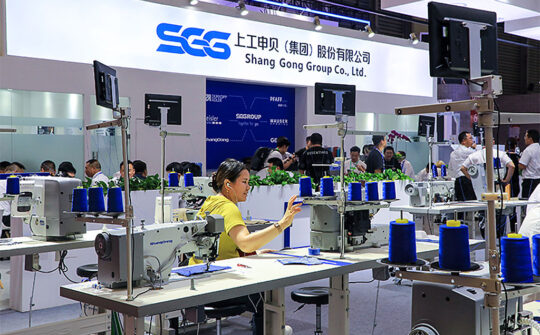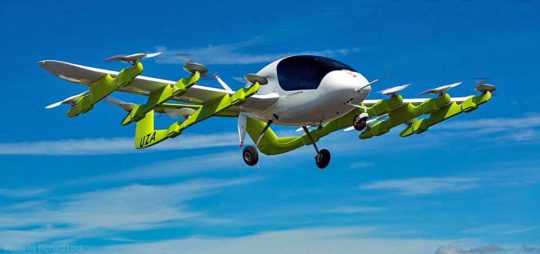Icon is a global enterprise. While its headquarters remains in Vacaville, California, fabrication is done in Mexico, and ownership is in China. For some years, this American start-up has benefitted from Chinese investment.
![]() How much investment has this California company attracted? Numbers I’ve been quoted vary enormously but all estimates run into many millions of dollars. If these guesses are even close to accurate, Icon has generated more investment funding than nearly any LSA producer. Only one outstrips them. That was a reported $200 million sale of Pipistrel to Textron, owner of Cessna and other aviation brands. I hope the aerospace conglomerate got all they hoped for because that is a super-premium valuation for any LSA company, even one as tech-savvy as Pipistrel.
How much investment has this California company attracted? Numbers I’ve been quoted vary enormously but all estimates run into many millions of dollars. If these guesses are even close to accurate, Icon has generated more investment funding than nearly any LSA producer. Only one outstrips them. That was a reported $200 million sale of Pipistrel to Textron, owner of Cessna and other aviation brands. I hope the aerospace conglomerate got all they hoped for because that is a super-premium valuation for any LSA company, even one as tech-savvy as Pipistrel.
![]() Icon has performed reasonably well in recent years (“200 Delivered” report) but prior investments in the company require sales volumes that are difficult to reach, especially with a $400,000 price tag. The drag of all that debt caused the company to stall, financially.
Icon has performed reasonably well in recent years (“200 Delivered” report) but prior investments in the company require sales volumes that are difficult to reach, especially with a $400,000 price tag. The drag of all that debt caused the company to stall, financially.
This lead to Icon entering bankruptcy (see “stalking horse” article).
A Buyer Emerges
In a fairly short time, a new buyer emerged, one still headquartered in China. A $13.5 million bid was reported by Yicai Global, a Chinese news source (original article in English).
Yicai reported on May 22, 2024 that “shares of stock in Shang Gong Group soared to the exchange-imposed limit after the Chinese sewing machine maker and logistics service provider said that it will invest $13.5 million to buy insolvent US light airplane maker Icon Aircraft and take on its debt.”
Yicai reported, “Shang Gong set up a subsidiary in the US as a stalking horse bidder to negotiate an asset purchase agreement with Icon Aircraft.” The Shanghai-based stock company said that funds would be used “to acquire selected assets from the Vacaville, California-based company and its three affiliated firms.” The “affiliated” firms were not identified and the news source did not respond to an email inquiry.
“As the assets will be sold by auction, Shang Gong will bid against any other competitors and the actual transaction cost may be higher than the current offer price,” Yicai continued.
This picture gets more convoluted.
“Icon Aircraft, whose main production base is in Mexico and which employs 313 people, is owned by a shareholder of Shang Gong called Shanghai Puke Feiren,” Yicai reported. The shareholder is an investment company with a diverse portfolio.

Shang Gong Group manufactures sewing machines. Image from Yicai Global
“The takeover will help Shang Gong branch into the manufacturing of carbon fiber products … and carbon fiber structural parts,” Yicai wrote. Similar to Textron admiring the pioneering work Pipistrel had done with electric propulsion, Shang Gong may prize Icon’s knowledge of working with carbon fiber, used to fabricate most of an A5 LSA seaplane. Since it was established in 2006, Icon has designed and produced using carbon fiber to keep weight light.
Icon’s carbon fiber fabrication experience combined with Shang Gong’s “world-class technology in the stitching and cutting of carbon fiber composite materials,” allows the Chinese firm to provide “a one-stop solution integrating design, development and production,” surmised Yicai in their article.
Great, but what about Icon A5 aircraft?
Too Like Textron?
Why Conglomerates Buy…
The production and sale of Icon A5 aircraft will likely remain primarily an American activity. As I researched this story, an always-reliable contact, Chi-Tai Hsieh of AeroJones Aviation, informed me, “The whole of China is very keen on the so-called low-altitude economy at present.” However, he clarified, “China is basically focusing on eVTOL. Traditional aircraft do not really attract too much attention.”
The market for recreational aircraft like Icon A5 is very small in China. The country leans toward practical solutions like transportation rather than leisure flying, although any opening of the lower-altitude airspace might quickly change that situation.
“Since the end of last year, the Chinese government has incorporated low-altitude economy into its policies, so now almost any company wants to have something to do with aviation,” Tai explained.

Meanwhile… Icon and its sleek A5 will continue in operation, the company has assured. Other sources I consulted were dubious about the $13.5 million investment being enough to rescue Icon, given the weight of servicing all prior investments. Only in time will we know for sure.
Americans who own an A5 aircraft are in no jeopardy, Icon assures. Sales and service will continue.


Leave a Reply